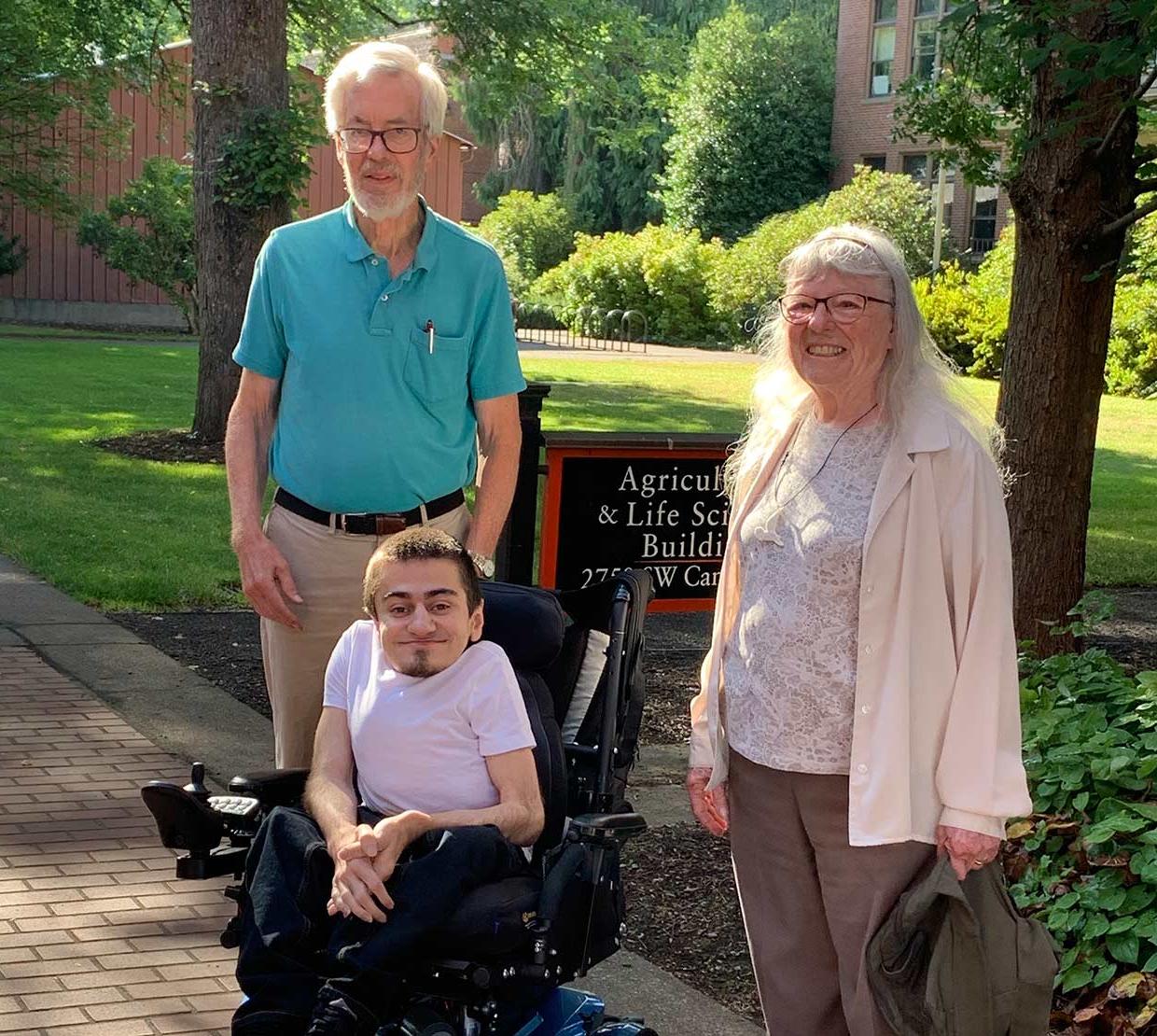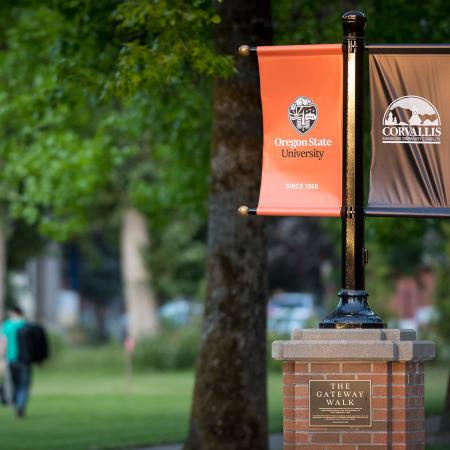Doctoral student Patrick Morar is the 2019-20 Christopher and Catherine Mathews Graduate Fellow in the Department of Biochemistry and Biophysics. Morar was selected among many talented candidates on the basis of his academic merit, teaching acumen and research potential.
The endowed fellowship, awarded every summer to a second-year Ph.D. student, was created in 2015 thanks to the generosity of emeritus professor Chris Mathews and his wife Kate to help recruit and retain topnotch students in the biochemistry and biophysics Ph.D. program. Mathews, a distinguished professor, continues to have an outsize impact on both the department and the field. He chaired the department from 1978-2002, published leading research in the area of nucleotide metabolism and co-authored several well-regarded biochemistry textbooks. Last but not least, as an emeritus professor, Mathews continues a long history of being a valued colleague and mentor to many.
“I am delighted to see Patrick receive this well-deserved honor, and grateful once again to Chris and Kate for their highly impactful support,” said Andrew Karplus, head of the biochemistry and biophysics department.
The gift has been leveraged through the Provost Graduate Fellowship Match Program, a partnership between the OSU Foundation, the Department of Biochemistry and Biophysics and The Graduate School.
This year’s awardee, Patrick Morar, grew up in Beaverton, Oregon. As an undergraduate majoring in biochemistry at George Fox University in Newberg, Oregon, he became interested in proteins and his genetic disorder, osteogenesis imperfecta (OI), which is caused by a mutation in the structural protein type I collagen. In 2017, Morar collaborated with doctors Eric Orwoll and Lindsey Nicol at Oregon Health & Science University on a publication exploring altered non-type I collagen levels in OI patients and contributed to the hypothesis that aberrant type I collagen could impact the shared biosynthesis and extracellular organization of other collagens.
After graduating, Morar came to Oregon State to pursue a Ph.D. in biochemistry and biophysics. In his first year of graduate study, he rotated with professors Phil McFadden, David Hendrix and Elisar Barbar, exploring both experimental and computational research projects. With a new understanding of the power of computation to reveal some of biochemistry’s greatest mysteries, Morar decided to join the Hendrix Lab, where he plans both to continue studying rare mutations that cause OI so that he can develop a more complete model for how mutations lead to disease. He also plans to investigate the effects of aging on circadian rhythms through bioinformatics and computational approaches.




